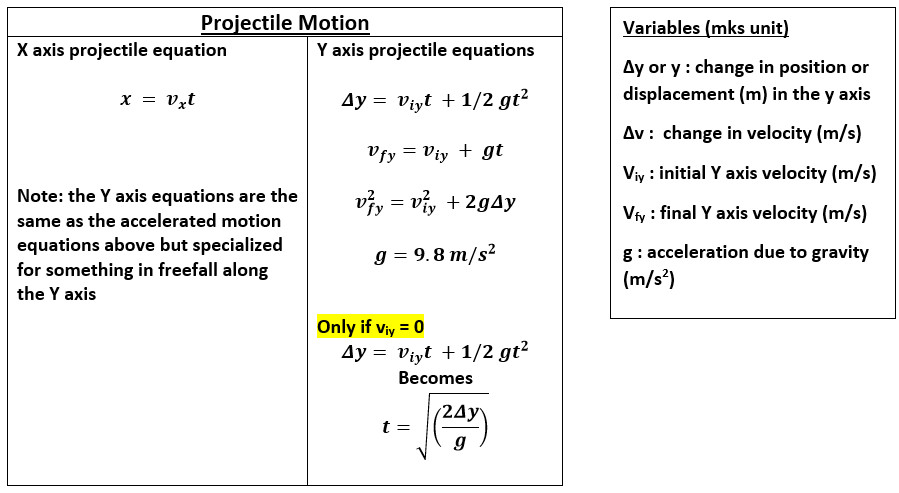

The above equations work well for motion in one-dimension, but a projectile is usually moving in two dimensions - both horizontally and vertically. Three common kinematic equations that will be used for both type of problems include the following:Įquations for the Horizontal Motion of a Projectile In this part of Lesson 2, we will focus on the first type of problem - sometimes referred to as horizontally launched projectile problems. The second problem type will be the subject of the next part of Lesson 2. Determine the time of flight, the horizontal distance, and the peak height of the long-jumper. A long jumper leaves the ground with an initial velocity of 12 m/s at an angle of 28-degrees above the horizontal.Determine the time of flight, the horizontal distance, and the peak height of the football. A football is kicked with an initial velocity of 25 m/s at an angle of 45-degrees with the horizontal.Predictable unknowns include the time of flight, the horizontal range, and the height of the projectile when it is at its peak. Upon reaching the peak, the projectile falls with a motion that is symmetrical to its path upwards to the peak. Determine the initial horizontal velocity of the soccer ball.Ī projectile is launched at an angle to the horizontal and rises upwards to a peak while moving horizontally. A soccer ball is kicked horizontally off a 22.0-meter high hill and lands a distance of 35.0 meters from the edge of the hill.

Predict the time required for the pool ball to fall to the ground and the horizontal distance between the table's edge and the ball's landing location.

\)(t) can be written as a vector sum of the one-dimensional velocities v x(t), v y(t), v z(t) along the x, y, and z directions.


 0 kommentar(er)
0 kommentar(er)
